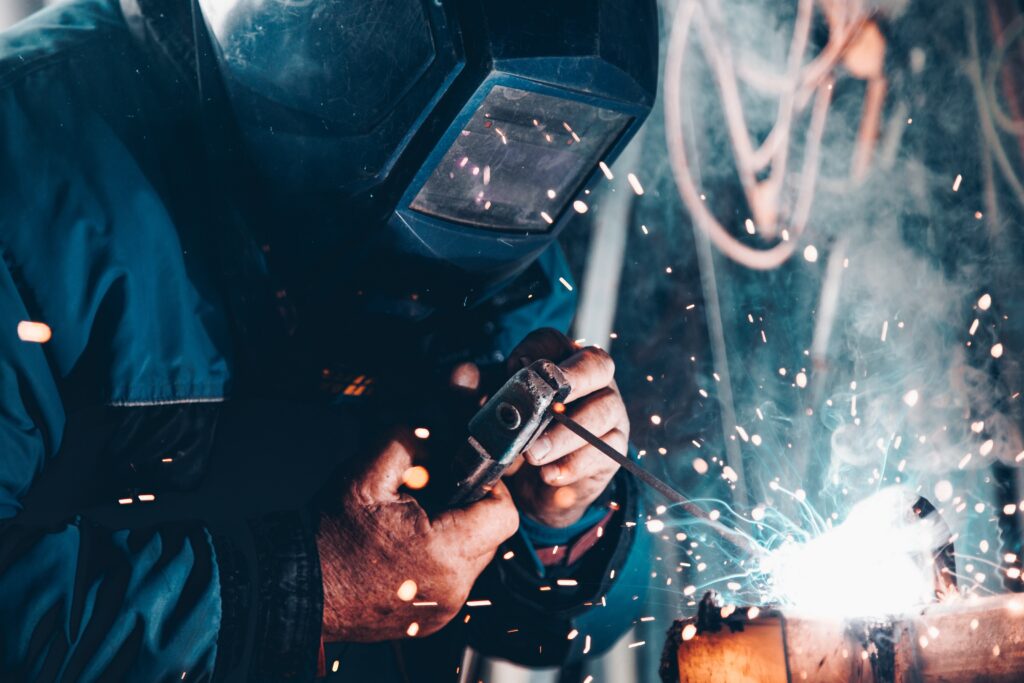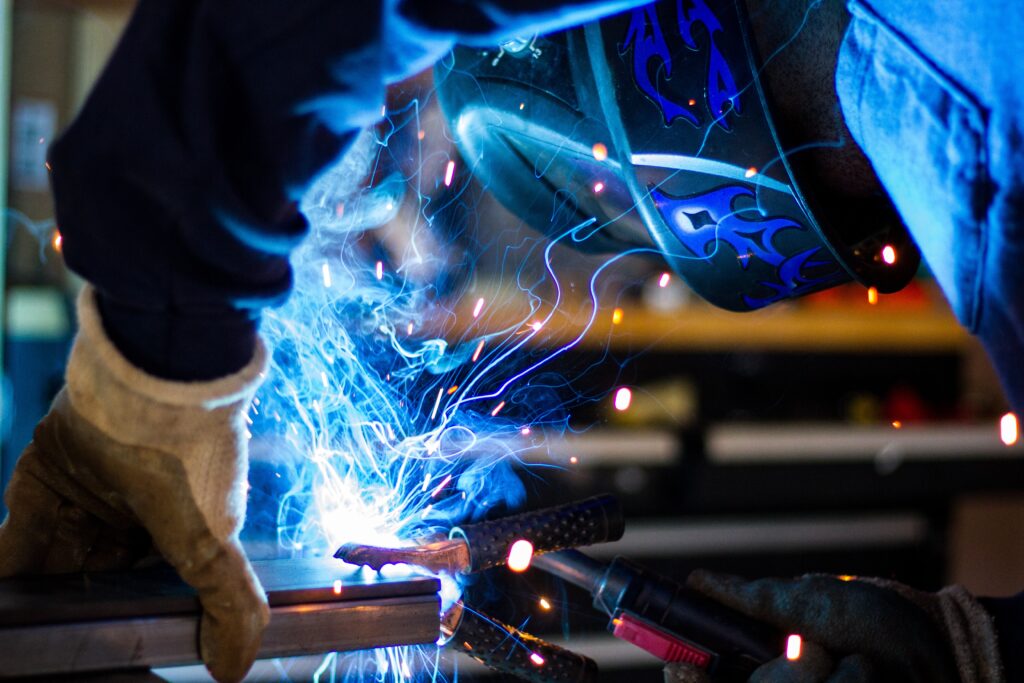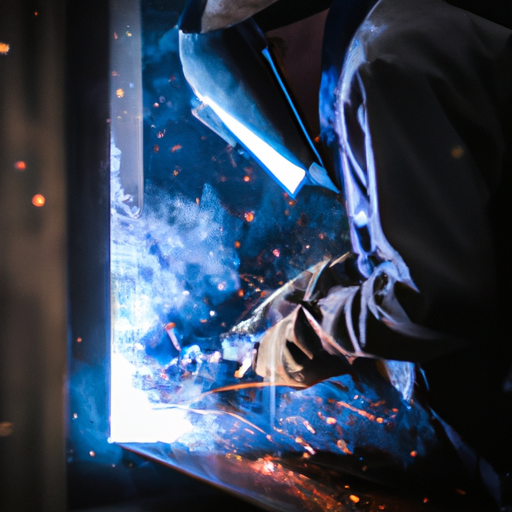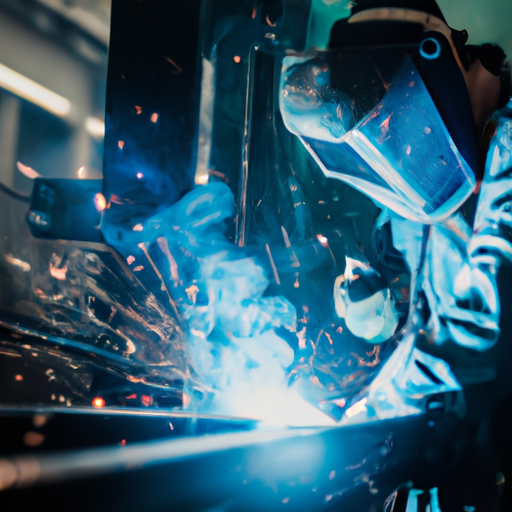being a welder can be a rewarding and fulfilling career, but like any profession, it also comes with its challenges. From working in extreme conditions to mastering complex techniques, there are several aspects that make being a welder a demanding job. However, one of the toughest parts of being a welder is often the constant need to adapt and learn new skills to keep up with evolving technologies and industry demands. In this article, we will explore the difficulties faced by welders and delve into the various aspects that make their job both challenging and exciting.
Understanding Welding Techniques
Welding is a highly skilled trade that requires a deep understanding of various welding techniques. As a welder, mastering multiple welding methods is crucial to your success in the field. From shielded metal arc welding (SMAW) to gas metal arc welding (GMAW) and tungsten inert gas welding (TIG), each technique has its own unique intricacies and challenges. It is essential to invest time and effort into learning and honing your skills in each of these methods to become a versatile and competent welder.
Furthermore, it is important to keep up-to-date with evolving techniques in the welding industry. With advancements in technology, new welding methods are continually being developed. Being aware of these emerging techniques and familiarizing yourself with them can give you a competitive edge in the field. Attending workshops, seminars, and trade shows, as well as staying connected with industry publications, can provide you with valuable insights into the latest welding trends and innovations.
Dealing with complex welding processes is another aspect that requires your attention and expertise. Some welding projects involve intricate designs and require precision and attention to detail. Whether it is fabricating intricate metal structures or working on delicate components, having the ability to navigate complex welding processes is crucial to ensure the quality and durability of the final product. Patience, focus, and meticulousness are key traits that can help you tackle complex welding projects with confidence.
Managing Physical Strains
Being a welder involves working with heavy equipment, such as welders, grinders, and plasma cutters, among others. Maneuvering and operating these tools often requires physical strength and endurance. Carrying, setting up, and using heavy equipment can put strain on your body, particularly your back and limbs. Proper techniques for lifting and moving heavy objects, as well as regular exercise and maintaining good posture, can help prevent injuries and manage physical strains.
In addition, welders are often required to work in uncomfortable positions. These positions can range from kneeling or crouching to working in confined spaces. These prolonged and awkward positions can strain your muscles and joints, leading to fatigue and discomfort. Taking regular breaks, stretching, and using ergonomic tools and equipment can help alleviate the physical strain associated with uncomfortable positions.
Physical fatigue is another challenge that welders face, especially when working long hours. The demanding nature of the job, combined with the need to meet project deadlines, can result in fatigue, which can affect both your performance and safety. It is important to prioritize rest and ensure you are getting adequate sleep to minimize the risk of fatigue. Listening to your body, staying hydrated, and fueling yourself with nutritious meals can also help maintain your energy levels throughout the day.

Navigating Potential Health Risks
Welding exposes you to various health risks that need to be understood and managed. Exposure to harmful gases and fumes is a significant concern in the welding industry. The welding process releases gases such as ozone, nitrogen oxide, and carbon monoxide, which can be toxic if inhaled in excessive amounts. Utilizing effective ventilation systems, wearing proper personal protective equipment (PPE), such as respirators, and working in well-ventilated areas can help reduce the risks associated with harmful gases and fumes.
The risk of burns and injuries is also prevalent in welding. The intense heat produced during the welding process can cause severe burns if proper protective measures are not taken. Heat-resistant clothing, gloves, aprons, and face shields are essential components of a welder’s safety gear to minimize the risk of burn injuries.
Long-term health issues, such as loss of vision and respiratory problems, can also be a concern for welders. Prolonged exposure to the ultraviolet (UV) and infrared (IR) radiation emitted during welding can lead to vision problems, including cataracts and retinal damage. Wearing appropriate eye protection, such as welding helmets with UV and IR filters, is vital to safeguard your eyesight. Additionally, respiratory protection, such as respirators or masks, should be used when working in environments with airborne contaminants, such as welding fumes, to prevent respiratory issues.
Working under Extreme Conditions
Welders often find themselves working under extreme conditions that can test their physical and mental resilience. One such condition is surviving heat and intense light. The welding process generates a significant amount of heat and produces a blinding arc that can be overwhelming. Exposure to extreme heat can quickly lead to heat exhaustion or even heat stroke if precautions and breaks are not taken. Adequate hydration, regular breaks in cool areas, and wearing suitable heat-resistant clothing can help manage the challenges of working in high-temperature environments.
Working in confined spaces is another aspect of welding in extreme conditions. Welding in tight and cramped spaces can be physically demanding and mentally taxing. The limited room for movement and potential lack of proper ventilation can make it challenging to maintain comfort and safety. Thorough planning, appropriate safety measures, and effective communication with colleagues can help minimize the risks associated with working in confined spaces.
Welders are often required to handle outdoor projects in harsh weather conditions, such as extreme cold, rain, or even snow. Operating in adverse weather conditions increases the risk of accidents and injuries. Taking weather conditions into account when planning projects, wearing appropriate clothing and footwear, and using extra caution when working in slippery or unstable conditions are essential strategies for dealing with outdoor projects in harsh weather.

Meeting Precision and Quality Standards
Precision is paramount in the world of welding. Meeting precise measurements and cut requirements is crucial to ensure the structural integrity and functionality of the welded components. A minor error in measurement or cut can lead to significant issues, affecting the overall quality of the project. Utilizing accurate measuring tools, following detailed blueprints, and paying meticulous attention to detail are key practices that can help you maintain precision in your work.
Achieving flawless finishes is another challenge faced by welders. Welds must be smooth, even, and free of defects to meet industry quality standards. Inconsistencies or imperfections in the weld can compromise its strength and structural integrity. Proper welding technique, attention to detail, and consistent practice are necessary to achieve flawless finishes consistently.
Meeting strict industry quality standards is an ongoing challenge for welders. Welding specifications and requirements can vary depending on the project, client, and industry standards. Keeping up with evolving standards and regulations, staying informed about industry best practices, and continuously improving your skills and techniques are essential for meeting and exceeding quality standards.
Dealing with Job Security Issues
The welding industry, like many others, experiences variability in job opportunities. The demand for welders can fluctuate based on economic conditions, industry trends, and even geographical location. As a welder, it is essential to develop a diversified skill set and remain adaptable to different types of welding projects. Expanding your knowledge and expertise in complementary areas, such as inspection or project management, can enhance your job prospects and increase your job security.
Economic downturns can significantly impact employment opportunities in the welding field. During economic recessions or downturns, construction projects may be put on hold or reduced in scale, leading to a decrease in demand for welders. Establishing a strong professional network, staying updated with industry trends, and having backup plans or alternate sources of income can help mitigate the impact of economic downturns on job security.
Competition and advancement challenges are also prevalent in the welding industry. As the field of welding becomes increasingly competitive, welders are constantly striving to differentiate themselves and advance in their careers. investing in continuing education, pursuing industry certifications, and building a strong reputation for quality work can help you stand out from the competition and open doors for career advancement opportunities.

Pursuing Continuous Learning and Training
In the ever-evolving field of welding, continuous learning and training are crucial for your success as a welder. Keeping your knowledge and skills current ensures your competency and adaptability to changing industry practices and regulations. participating in training programs, workshops, and seminars can equip you with new techniques, tools, and industry insights that can enhance your performance and marketability.
Investing time and resources in continuous education may pose challenges for welders. Balancing work responsibilities with training commitments can be demanding, requiring careful time management and prioritization. However, the long-term benefits of staying updated with industry advancements and improving your skills far outweigh the challenges of continuous learning.
Learning new technology and tools can also be difficult for some welders. With the increasing integration of automation and robotics in welding processes, adapting to new technology can be a learning curve. However, embracing new technology and understanding how to leverage it effectively can enhance your productivity, precision, and efficiency as a welder. Having an open mindset, seeking guidance from experts or mentors, and engaging in hands-on practice can help you overcome the difficulty and embrace new tools and technology.
Enduring Isolation and Stress
Welding can often be a solitary job, lacking social interactions during work hours. Unlike office environments where coworkers are readily available for conversation and collaboration, welders often work independently, focusing on their tasks. This isolation can sometimes lead to feelings of loneliness and reduce opportunities for socializing. Finding ways to maintain social connections outside of work, such as joining industry groups, attending professional events, or engaging in hobbies with like-minded individuals, is essential for combating isolation and nurturing a healthy work-life balance.
Managing stress and maintaining focus are essential skills for welders. The welding process requires concentration, attention to detail, and the ability to stay calm under high-pressure situations. The nature of welding work, with its potential risks and demand for precision, can be stressful at times. Developing stress management techniques, such as deep breathing exercises, mindfulness practices, or finding healthy outlets for stress, can help you stay focused and perform at your best despite the pressures of the job.
Dealing with monotony and isolation can also be challenging for welders. Repetitive tasks and a lack of variety in welding projects can contribute to boredom and a feeling of stagnation. Seeking ways to introduce variety into your work, collaborating with other welders on larger projects, or exploring opportunities to work on diverse projects can break the monotony and rekindle your passion for welding.

Facing Environmental Concerns
Environmental considerations have become increasingly important in all industries, including welding. Addressing waste disposal issues is essential to minimize the impact on the environment. Properly disposing of hazardous materials, such as welding electrodes, contaminated materials, or cleaning solvents, is crucial for preventing pollution and adhering to environmental regulations. Identifying and implementing sustainable waste management practices, such as recycling or reusing materials whenever possible, is a responsible approach that every welder should adopt.
Mitigating energy consumption is another environmental concern for welders. Welding processes consume a significant amount of energy, particularly when using electrical equipment. Being mindful of energy usage, implementing efficient welding techniques, and considering alternative energy sources, such as solar power, can contribute to reducing the environmental footprint of welding operations.
Reducing harmful emissions is also a priority when it comes to environmental sustainability in welding. The welding process can release harmful gases and pollutants into the atmosphere, negatively impacting air quality. Utilizing advanced welding technologies, such as low-emission welding processes or efficient exhaust systems, can help minimize the emission of harmful substances. Additionally, implementing proper ventilation systems and utilizing appropriate PPE can protect both the welder and the environment from harmful emissions.
Balancing Personal Life and Work
Work-life balance is a challenge that many welders face due to the demanding nature of the job. Struggling with long or irregular work hours is a common issue that can affect personal relationships and quality of life. Finding ways to establish a routine and set boundaries between work and personal life can help maintain a healthy balance. Communicating with your loved ones about your work schedule, prioritizing self-care, and making time for hobbies and leisure activities are essential for achieving a sense of balance.
Balancing family obligations and work demands is another aspect that requires careful attention. Welders often work on construction projects that may require travel or relocation, which can significantly impact family life. Maintaining open communication with your family, involving them in decision-making processes, and exploring flexible work arrangements are strategies that can help you navigate the challenges of balancing family obligations with your welding career.
Dealing with possible relocation and travel requirements can be stressful and disruptive. Moving to different job sites or working on projects in remote locations may pose challenges in terms of finding suitable housing, adjusting to new environments, and being away from home for extended periods. Developing resilience, embracing change, and seeking support from your network can help you cope with the demands of relocation and minimize the impact on your personal life.
In conclusion, being a welder comes with its own unique set of challenges and demands. Understanding welding techniques, managing physical strains, navigating potential health risks, working under extreme conditions, meeting precision and quality standards, dealing with job security issues, pursuing continuous learning and training, enduring isolation and stress, facing environmental concerns, and balancing personal life and work are all crucial aspects that welders must address.
By acknowledging and proactively managing these challenges, you can thrive in the welding profession and enjoy a fulfilling and successful career. Remember to prioritize your health and safety, stay informed about industry developments, continuously enhance your skills, and foster a healthy work-life balance. With determination, resilience, and a commitment to excellence, you can overcome the hurdles of being a welder and reap the rewards of a profession that combines creativity, skill, and craftsmanship.

